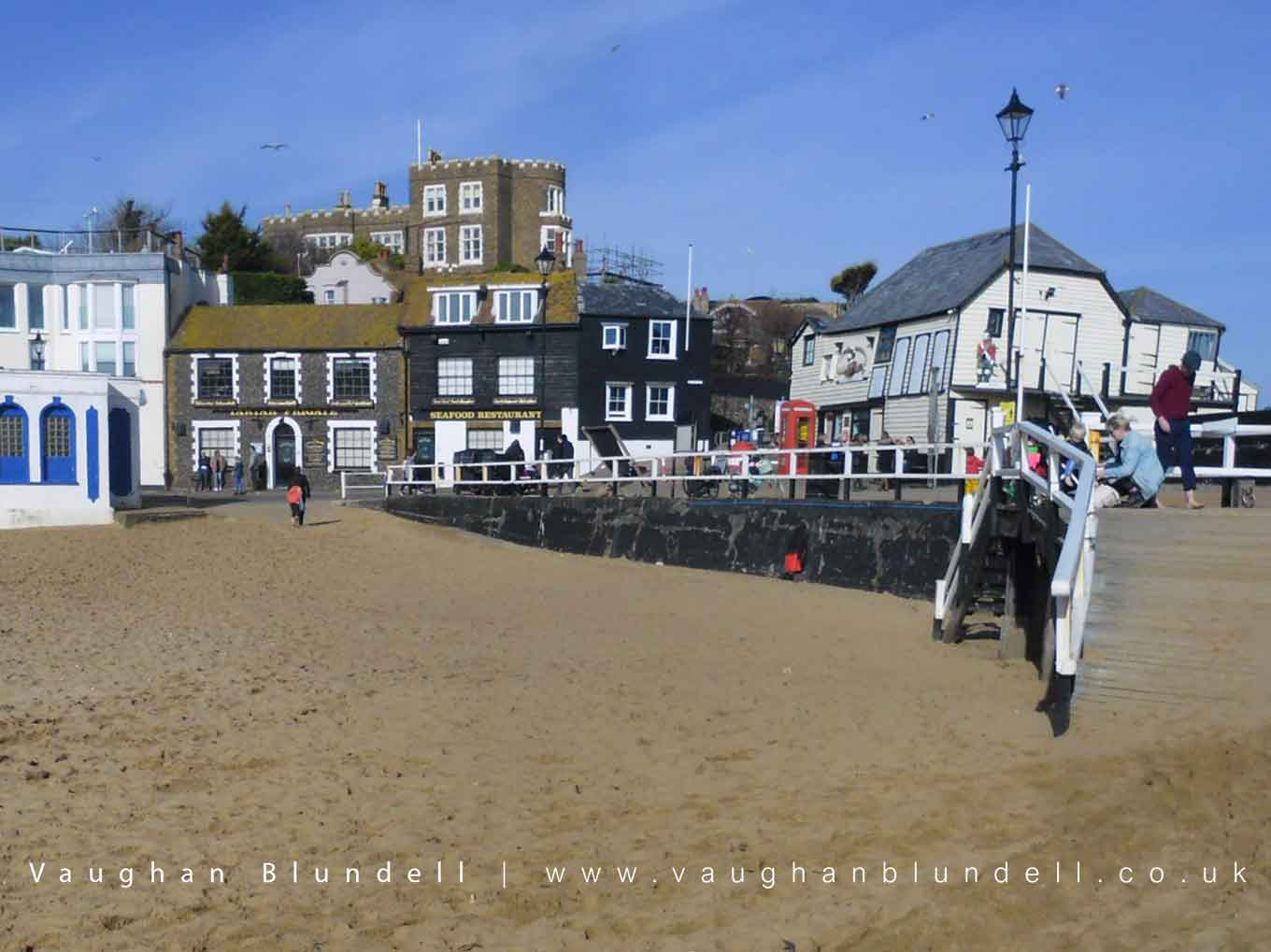
Bleak House by Vaughan Blundell
Bleak House
The Bleak House was originally known as “Fort House” as it was built as the residence of the Fort Captain during the Napoleonic Wars. This was one of Charles Dickens’ favourite lodging houses during the summer months and here he wrote ‘David Copperfield’ in 1851 and planned ‘Bleak House, though the ‘Bleak House’ of the novel is a completely fictitious building and this building was renamed many years after the book was published.
The core is early C19 but this was refronted and extended in 1901. 2 to 3 storeys and basement brown brick. The right hand portion of 3 storeys is the original building. Crenellated parapet. 2 altered mullioned and transomed windows with hood moulding to the older part and J mullioned and transomed windows, including a 5-light bay running through 2 storeys to the addition of 1901. The original door to the older wing has been blocked in to form a window and the original bow window recased and crenellated. Brick porch to modern wing with crenellated parapet and arched opening with hood moulding. The interior has been arranged as a Dickens Museum. The mahogany staircase and some fireplaces are original. Grade II for Dickens associations.
Created: 21 February 2021 Edited: 29 November 2023
Bleak House
Local History around Bleak House
There are some historic monuments around including:
Anglo-Saxon cemetery S of Ozengell GrangeSalmestone GrangeAnglo-Saxon cemetery, Dane Valley RoadDouble ring ditch and two enclosures 400yds (360m) NW of Danes Court.



